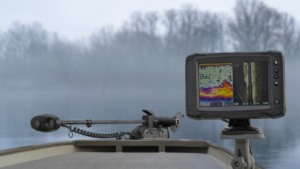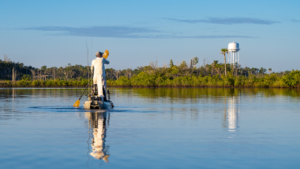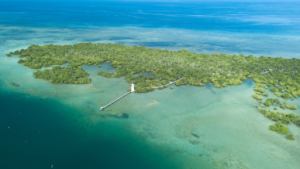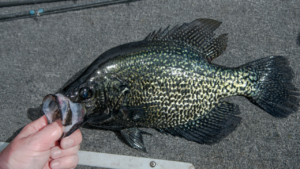Preserving Crappie: Ensuring a Legacy for Future Generations
Introduction
The Endangered Legacy of Crappie: A Call for Preservation
Crappie, with their distinctive black and white markings, are not just a prized catch for anglers but also play a crucial role in maintaining the delicate balance of aquatic ecosystems. These freshwater fish, which belong to the Centrarchidae family, are known for their delicious taste and the sporting challenge they offer to fishing enthusiasts. However, as human activities continue to exert pressure on natural habitats and fish populations worldwide, the preservation of crappie has become a matter of increasing concern.
Safeguarding Tomorrow’s Harvest: The Imperative of Sustainable Conservation
The significance of ensuring a sustainable legacy for future generations cannot be understated regarding crappie populations. By taking proactive steps to protect and preserve these fish species today, we safeguard our natural heritage and pave the way for future generations’ continued enjoyment and utilization of this valuable resource. Our intergenerational responsibility in preserving crappie reflects our commitment to biodiversity conservation and sustainable fisheries management in the face of mounting environmental challenges.
Understanding Crappie
An Enigmatic Duo: Black and White Crappie
Crappie, belonging to the sunfish family, are a beloved freshwater species sought after by anglers for their sporting qualities and delectable taste. The two main species of crappie, the black crappie (Pomoxis nigromaculatus) and white crappie (Pomoxis annularis) share similar physical characteristics such as deep, laterally compressed bodies with silvery scales marked by distinctive dark spots.
However, their coloration sets them apart – the black crappie exhibits a mottled black pattern, while the white crappie showcases vertical bars along its sides. Understanding the nuances between these species is crucial for effective conservation strategies tailored to their unique biology and habitats.
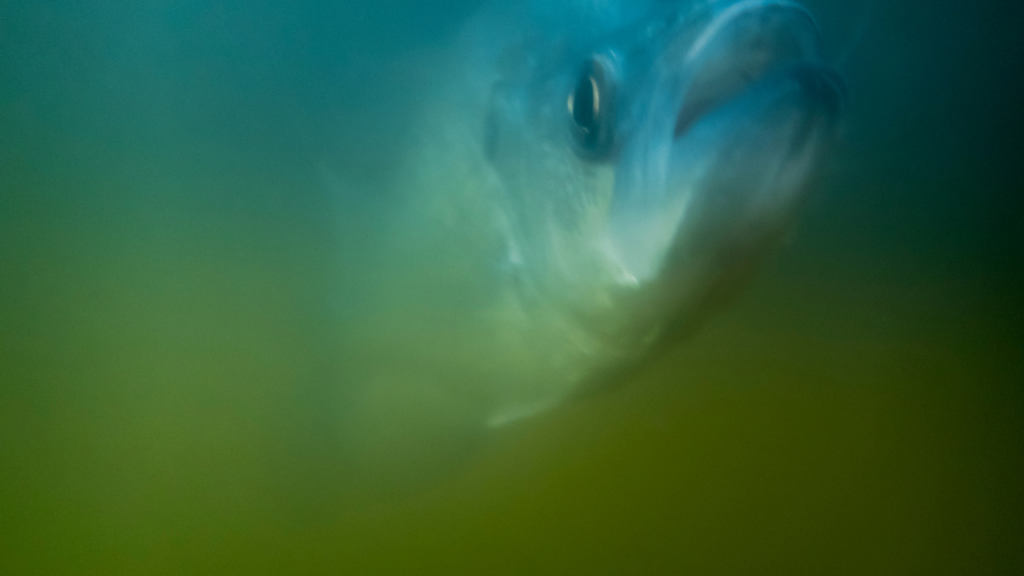
Home Sweet Home: Habitat Preferences and Behavior Patterns
Crappies are highly adaptable freshwater fish that thrive in various aquatic environments, including lakes, reservoirs, rivers, and ponds throughout North America. These friendly fish prefer clear waters with submerged vegetation or structures like fallen trees and brush piles to seek shelter and ambush prey. Crappies exhibit schooling behavior, especially during spawning seasons in spring when they gather in shallow waters to reproduce.
Their feeding habits vary based on location and available prey but typically consist of small fish, insects, and crustaceans. Understanding their habitat preferences and behavior patterns is essential for managing populations sustainably while ensuring their ecological role remains intact.
The Ecological Guardians: Role of Crappie in Aquatic Ecosystems
Crappies play a vital role in maintaining balanced aquatic ecosystems through predation on smaller fish species and controlling insect populations. As opportunistic feeders with voracious appetites, they help regulate fish populations below them in the food chain while also serving as prey for larger piscivorous species like bass and pike. Additionally, crappies contribute to nutrient cycling within water bodies through their feeding activities which can influence water quality dynamics.
Their presence or absence can impact overall ecosystem health and resilience. Recognizing the ecological importance of crappies underscores the need to prioritize their conservation efforts to safeguard not only this iconic species but also the broader biodiversity of freshwater habitats.
Threats to Crappie Populations
Overfishing and Exploitation
Crappie populations face a significant threat from overfishing and exploitation, especially in popular fishing areas. Due to their delicious taste and popularity among anglers, crappie is often targeted in large numbers, leading to unsustainable harvesting practices.
When crappie are overfished, it disrupts the delicate balance of their populations within aquatic ecosystems. The removal of a large number of crappie can have cascading effects on the entire food chain, impacting other species that depend on them for food.
Habitat Loss and Degradation
Another critical threat to crappie populations is habitat loss and degradation. Crappie rely on specific habitats for spawning, feeding, and shelter. However, human activities such as urban development, agriculture runoff, and deforestation have destroyed vital habitats for crappie.
Wetlands, essential breeding grounds for crappie, are particularly vulnerable to draining and development. Habitat degradation through pollution and sedimentation further exacerbates the challenges faced by crappie populations by reducing water quality and disrupting their natural behaviors.
Implementing Catch Limits and Size Restrictions
One of the critical strategies in preserving crappie populations is the implementation of catch limits and size restrictions. By imposing regulations on how many crappies can be caught per day or angler, fisheries management authorities can help prevent overfishing and ensure that crappie populations remain healthy and sustainable. Additionally, size restrictions can help protect larger, more mature crappies that are essential for breeding and maintaining genetic diversity within the population.
These regulations are often based on scientific research and data analysis to determine sustainable harvest levels that will not jeopardize the long-term viability of crappie populations. Anglers must adhere to these catch limits and size restrictions to support conservation efforts and preserve crappie for future generations.
Creating Protected Areas and Sanctuaries for Crappie Spawning Grounds
Another vital strategy for preserving crappie populations is establishing protected areas and sanctuaries designated for crappie spawning grounds. These areas serve as safe havens where crappies can reproduce without disturbance, allowing them to spawn and replenish their numbers successfully.
By safeguarding these critical habitats, conservationists can ensure that future generations of crappies have suitable environments to thrive in. Protected areas may include marshes, wetlands, or shallow bays where crappies typically spawn during certain times of the year.
By maintaining these sanctuaries free from human interference, such as development or pollution, we can help safeguard one of the most vulnerable stages in a crappie’s life cycle—the reproduction process. Protecting these spawning grounds is essential for sustaining healthy crappie populations in the long term.
Case Studies of Successful Crappie Conservation Programs
Preserving crappie populations requires a concerted effort from various stakeholders, including government agencies, local communities, and conservation organizations. In the United States, state wildlife agencies have played a crucial role in implementing regulations and programs to safeguard crappie populations.
For example, states like Minnesota and Missouri have instituted strict size limits and catch restrictions to prevent overfishing of crappie populations in their lakes and rivers. Additionally, these agencies conduct regular surveys to monitor crappie numbers and assess the effectiveness of conservation initiatives.
United States – Efforts by State Wildlife Agencies
Successful crappie conservation efforts in Canada have been achieved through collaboration between government entities and local communities. Provinces like Ontario have established partnerships with indigenous groups, recreational anglers, and environmental organizations to develop sustainable management plans for crappie fisheries. By incorporating traditional knowledge with modern scientific research, these initiatives aim to balance conservation goals with the socio-economic needs of local communities that rely on crappie fishing for sustenance and recreation.
Canada – Collaboration Between Government and Local Communities
Australia has adopted innovative approaches to habitat restoration as part of its crappie conservation strategies. In regions like New South Wales and Victoria, efforts are underway to rehabilitate degraded aquatic ecosystems that serve as critical spawning grounds for crappie populations. Through habitat enhancement projects such as wetland restoration, water quality improvement measures, and invasive species control programs, Australia is working towards creating healthy environments to support thriving crappie populations for generations.
Australia – Innovative Approaches to Habitat Restoration
Educating Anglers about the Importance of Conservation
Anglers play a crucial role in the preservation of crappie populations. By educating them about the importance of conservation, we can empower these key stakeholders to become advocates for sustainable fishing practices. Workshops, seminars, and informational campaigns can be organized to highlight the impact of overfishing and habitat degradation on crappie populations.
Providing anglers with data on population trends, regulations, and best practices can help them make informed decisions while on the water. By fostering a sense of stewardship among anglers, we can work towards ensuring a healthy future for crappie populations.
Furthermore, promoting catch-and-release practices among anglers can significantly contribute to the sustainability of crappie populations. Encouraging anglers to release larger fish for breeding helps maintain genetic diversity within the population.
Additionally, educating anglers on proper handling techniques and gear choices can minimize stress and injuries to crappie caught during fishing expeditions. We can create a responsible fishing culture that prioritizes crappie populations’ long-term well-being through collaborative efforts between conservation organizations, government agencies, and recreational anglers.
Engaging Youth in Fishing Programs to Instill a Sense of Stewardship
Engaging youth in fishing programs introduces them to the joys of angling and instills in them a sense of stewardship towards natural resources like crappie. Organizing youth fishing tournaments or summer camps focused on environmental education provides an opportunity to teach young individuals about the ecological significance of crappie and the importance of conservation efforts.
We can cultivate future conservation leaders passionate about preserving biodiversity by fostering an early connection with nature through fishing experiences. Moreover, incorporating lessons on sustainable fishing practices and ecosystem health into school curricula or community youth programs can further solidify young people’s understanding of their role in protecting crappie populations.
Hands-on activities such as fish tagging exercises or habitat restoration projects offer practical experiences that deepen youths’ appreciation for aquatic ecosystems. By empowering youth with knowledge and skills related to fisheries conservation, we are nurturing a generation committed to safeguarding our natural heritage for years to come.
Encouraging Citizen Science Initiatives to Monitor Crappie Populations
Citizen science initiatives provide valuable opportunities for community members to actively contribute data towards monitoring crappie populations. Engaging citizen scientists in projects such as fish counts, habitat assessments, or water quality monitoring expands our understanding of local ecosystems and promotes public involvement in conservation efforts.
By training volunteers in scientific protocols and data collection methods, we establish a network of dedicated individuals who aid researchers and policymakers in making informed decisions regarding crappie management. Furthermore, citizen science initiatives foster a sense of ownership among participants as they directly contribute towards preserving crappie habitats and populations within their communities.
Collaborating with local schools, angling clubs, or environmental organizations can mobilize a diverse range of volunteers eager to make meaningful contributions towards wildlife conservation. Through these collective efforts bridging science and society, we strengthen our capacity for long-term monitoring and protection strategies to ensure a sustainable legacy for future generations.
Future Challenges and Opportunities
Climate Change Impacts on Crappie Habitats
Climate change poses a significant threat to crappie habitats as rising temperatures and altered weather patterns can disrupt the delicate ecological balance they rely on. Warmer waters can lead to shifts in the distribution of crappie populations, affecting their spawning behaviors and food sources.
Additionally, extreme weather events such as floods or droughts can cause sudden changes in water levels, impacting the availability of suitable habitats for crappies to thrive. It is crucial for conservation efforts to take into account these impacts of climate change and develop adaptive strategies to ensure the long-term survival of crappie populations.
Technological Advancements in Tracking and Monitoring Fish Populations
Recent advancements in technology have revolutionized the way we track and monitor fish populations, providing valuable insights into the behavior and movement patterns of crappies. Tools such as acoustic telemetry systems allow researchers to tag individual fish and track their movements in real time, helping identify critical habitats and migration routes.
Remote sensing technologies like drones or satellite imagery provide high-resolution data on aquatic ecosystems, aiding in habitat mapping and monitoring changes over time. Integrating these technological advancements into conservation efforts can enhance our understanding of crappie populations and improve management strategies for their preservation.
Potential for Genetic Research to Enhance Breeding Programs
Genetic research offers promising opportunities to enhance breeding programs to conserve crappie populations. Researchers can identify unique traits that contribute to their resilience against environmental stressors or diseases by studying the genetic diversity within crappie species. This knowledge can inform selective breeding programs designed to strengthen desirable genetic traits in captive populations before reintroducing them into the wild.
Furthermore, genetic studies can help assess the overall health of wild crappie populations, guiding conservation efforts toward maintaining genetic diversity essential for long-term survival. Leveraging advances in genetic research presents a powerful tool for ensuring the sustainability of crappies for future generations.
Recapitulating the Legacy of Crappie Preservation
The preservation of crappies is not merely a matter of conservation but a testament to our commitment to safeguarding the biodiversity and ecological balance of our waterways for future generations. Through a comprehensive understanding of crappie species, their habitats, and their threats, we can implement targeted strategies to ensure their sustained existence. By addressing overfishing, habitat loss, and pollution while promoting sustainable fishing practices and conservation efforts, we can pave the way for a flourishing legacy of crappie populations across the globe.
Looking Towards a Brighter Future
As we forge ahead in our efforts to preserve crappies, there is cause for optimism. The success stories from conservation programs worldwide demonstrate that we can make significant strides in safeguarding these beloved fish species with dedication and collaboration.
By engaging communities, educating anglers, involving youth in conservation initiatives, and leveraging technological advancements for monitoring and research, we have the tools to overcome future challenges posed by climate change and habitat degradation. As stewards of our aquatic ecosystems, let us continue to uphold the legacy of preserving crappies as a beacon of hope for generations yet to come.

